Vol 8 No 3 2023 – 47

Agro-productive response of pepper hybrids in a tropical sheltered production system
Alexander Bernal Cabrera1,2* , Michel Leiva Mora3
, Michel Leiva Mora3 , Jorge Antonio Freile Almeida4
, Jorge Antonio Freile Almeida4 , Sandra Luisa Soria Re4
, Sandra Luisa Soria Re4 , Hugo Alejandro Castro Alban5
, Hugo Alejandro Castro Alban5 , Rene Nazareno Ortiz6
, Rene Nazareno Ortiz6 , Yosbel Lazo Roger7
, Yosbel Lazo Roger7 and Justo Antonio Rojas Rojas7
and Justo Antonio Rojas Rojas7
 , Michel Leiva Mora3
, Michel Leiva Mora3 , Jorge Antonio Freile Almeida4
, Jorge Antonio Freile Almeida4 , Sandra Luisa Soria Re4
, Sandra Luisa Soria Re4 , Hugo Alejandro Castro Alban5
, Hugo Alejandro Castro Alban5 , Rene Nazareno Ortiz6
, Rene Nazareno Ortiz6 , Yosbel Lazo Roger7
, Yosbel Lazo Roger7 and Justo Antonio Rojas Rojas7
and Justo Antonio Rojas Rojas7
1* Centro de Investigaciones Agropecuarias, Facultad de Ciencias Agropecuarias, Universidad Central “Marta Abreu” de Las Villas, Cuba; e-mail: alexanderbc@uclv.edu.cu.
2 Departamento de Agronomía, Facultad de Ciencias Agropecuarias, Universidad Central “Marta Abreu” de Las Villas, Cuba; e-mail: alexanderbc@uclv.edu.cu.
3 Laboratorio de Biotecnología, Facultad de Ciencias Agropecuarias, Universidad Técnica de Ambato; e-mail: m.leiva@uta.edu.ec.
4 Universidad Estatal Amazónica; e-mail: jfreile@uea.edu.ec.
4 Universidad Estatal Amazónica; e-mail: ssoria@uea.edu.ec.
5Agromikroben, Riobamba, Chimborazo, Ecuador. e-mail: castroalex1711@hotmail.es.
6 Universidad Técnica Luis Vargas Torres de Esmeraldas. E-mail: rene.nazareno@utelvt.edu.ec.
7 Centro de Gestión Internacional de Capacitación y Posgrado (GESICAP), Ecuador; e-mail: ylazoroger81@gmail.com.
7 Centro de Gestión Internacional de Capacitación y Posgrado (GESICAP), Ecuador; e-mail: jarr2015@yahoo.es.
*Correspondence: e-mail: alexanderbc@uclv.edu.cu; Tel.: +53 53940108.
Available from: http://dx.doi.org/10.21931/RB/2023.08.03.47
ABSTRACT
The present work aimed to evaluate the agro-productive response of bell pepper ‘Robur F1’ and ‘Clair F1’ hybrids. The experiment was conducted in a tropical sheltered production system at the «Valle del Yabú» Agricultural Enterprise. The experimental design was a randomized complete block with four replicates. The height and diameter of the main stem, length of internodes, and number of days to flowering were evaluated. Additionally, the number of fruits per plant, average fruit weight and yield, and fruit quality attributes (thickness of the pericarp, length, top width, color, shape, and number of lobes) were recorded. Results showed that ‘Robur F1’ reached a higher height (33.9 cm), the diameter of the main stem (12.9 mm) and the length of the internodes (9.84 cm). ‘Clair F1’ showed the highest number of fruits per plant (12), average fruit weight (273.60 g), and yield (3.87 kg/m2). A higher pericarp thickness and fruit width were observed in ‘Clair F1’, while the fruit was longer in ‘Robur F1 (13 cm). Both hybrids had green bell peppers and fruits. With the knowledge of agro-productive characteristics of both pepper hybrids, Cuba may select the most remarkable genotype under a tropical sheltered production system.
Keywords: agricultural yield, Capsicum annuum, fruit quality, morphological traits.
INTRODUCTION
Agro-plasticulture and all the associated technologies mark a line of agricultural development indispensable to increase the yields in some crops, improving environmental conditions to facilitate the growth and development of horticultural species 1.
The greenhouses in cold and temperate countries and the protected cultivation in the tropical region are modalities of agriculture under plastic that allow convert zones with some agro-productive limitation, extend the harvest calendars of many horticultural species and increase productive potential2.
Vegetables worldwide are essential foods for humans because they contain vital nutrients. The cultivation of vegetables is increasingly attracting consumers. One of the crops prioritized in these systems is the pepper (Capsicum annuum L.), which occupies a prominent place in horticultural production because of its preference in the human population due to its exquisite taste and high nutritional value4.
The pepper, belonging to the family Solanaceae, is native to Central and South America. According to FAOSTAT 5, the harvested area of pepper in the world in 2020 was 2 069 990 ha, with a production of 36.1 million tonnes. In the world condiment trade, it occupies the second place. The sweet pepper is consumed in fresh condition, and some cultivars with a high spiciness, in addition to being used as food, are used as a medicine for their remarkable contents of vitamins A and C6.
In Cuba, in 2020, the pepper occupied a cultivated area of 7,621 ha and a production of 59,285 tonnes5. The cultivars commonly used are Tropical CW-3, Spanish, Maor and SC 817, and Milor F1 and Lical resistant cultivars8.
One of the main problems that limit pepper production in Cuba is the introduction of foreign hybrids without previous knowledge of their agro-productive characteristics under a tropical sheltered production system. The present work aimed to evaluate the agro-productive response of two pepper hybrids under a sheltered production system.
MATERIALS Y METHODS
This study was carried out in a tropical sheltered production system, model Tropical A-12 designed by the Cuban-Spanish company CARISOMBRA with 540 m2 (12 m wide and 45 m long), a height at the top of 4 m and an umbrella effect (typology 2) on Inceptisol soil belonging to protected cultivation module in the Agricultural Enterprise «Valle del Yabú», Santa Clara, Villa Clara, Cuba during October 2019 to March 2020.
Seed of pepper hybrids Clair F1 and Robur F1 (Enza Zanden, Netherlands) were sowed on August 25, 2019, and placed in trays of polystyrene with 247 cells (2.9 x 2.9 x 6.5 cm, volume of 32.5 cm3. The tray substrate used was 100 % Blonde peat, treated with a Trichoderma harzianun bioproduct (strain A-34) at a rate of 300 ml per 10 kg of substrate. Before sowing, the seed was treated with systemic insecticide imidacloprid (Gaucho FS 60) at 70 g per kg of seed.
Seedlings were transplanted on October 13rd. The planting distance was 1.20 m x 0.40 m in a double row on the bed under a randomized complete block design with treatments replicated four times. A drip irrigation system was used with a black flexible PVC irrigation pipe of 16 mm in diameter. Drippers separated at 0.39 cm and a flow of 2.0 L h-1.
The agronomic management of the crop (vertical handling, offspring, defoliation, fructification pruning, beheading and pest management) was carried out as established in the Manual for producing protected vegetables9.
Evaluation of morphological characteristics
Evaluations of morphological characteristics were carried out on 30 plants per treatment. Height and diameter of the main stem (mm) were recorded at 15, 30 and 45 days after the transplant (DAT). Height was measured with a nonelastic measuring tape, and diameter was recorded in the middle part of plants with a Vernier caliper. The internode length (on primary side shoots) was recorded 45 days after the transplant (DAT). The number of days to flowering (days) was determined when 50 % of the flowers were open.
Agricultural performance and yield components
Harvests were made when the fruits presented the state of beginning of maturity (physiological maturity). In total, 28 harvests were carried out throughout the productive cycle, in which the agricultural yield and its main components were determined. They were evaluated in 30 plants in each hybrid.
– Number of fruits per plant was registered at 85 days after the transplant (DAT) when the first harvest was done. The average weight of the fruit (g) was recorded using a digital analytical balance (Brand Kern PRS 320-3, Germany) in 60 fruits taken at random.
– Determination of agricultural yield (kg/m2) was done by randomly harvesting all fruits of all plants in 1 m2 at five different points. Fruits were weighted on a digital analytical balance.
Fruit quality
At harvest, the following qualitative and quantitative fruit quality attributes were evaluated in 20 randomly chosen fruit. Pericarp thickness, fruit top width (mm) and length (mm) were determined with a Vernier caliper. Fruit skin color was determined visually at physiological maturity. Fruit shape and the number of fruit lobes were evaluated10.
Statistical analysis
Statistical analysis and significance were calculated using a one-way ANOVA and the post-hoc t-Student test. A P-value < 0.05 was considered statistically significant. Statistical processing was performed using the Statgraphics Centurion software package (version 16.1.11, StatPoint Technologies Inc., Warrenton, Virginia, USA).
RESULTS Y DISCUSSION
Height of the main stem
Robur F1′ at 15, 30 and 45 DAT had a longer main stem than to hybrid ‘Clair F1’ (Figure 1).

Figure 1. Plant height of the main stem of two bell pepper hybrids during the crop cycle, (a, b) Treatments with the same letter are not significantly different by t-Student test (p≤0.05) (DAT)= Days After Transplant, S.E = Standard error, C.V = Coefficient of variation
In pepper, height is measured to the first bifurcation immediately after the first harvest. According to the pepper descriptor, five categories of plant height may exist (category 1 less than 25 cm, category 2 from 25 to 45 cm, category 3 from 46 to 65 cm, category 4 from 66 to 85 cm and category 5 more than 85 cm. Both studied hybrids belonged to category 2.
Plant height is associated with competitive vigor, plant fecundity, aboveground biomass, rooting depth, lateral spread and leaf size, and plant density11. In the pepper breeding program, evaluation of the height of the main stem was associated with hybrid vigor12 and may manifest heterosis for earliness, fruit yield, and yield attributing characters in sweet pepper13.
Harrison et al.14 considered the height of the main stem of great importance since it is sought that the fruits may be placed a long distance from the ground so that it can reduce the splash of water. The values obtained in the Clair F1 and Robur F1 hybrids were superior to those obtained by Herison14.
Diameter of the main stem
The hybrid Robur F1 at 15, 30 and 45 DAT had larger diameter of the main stem respect to hybrid Clair F1 (Figure 2).
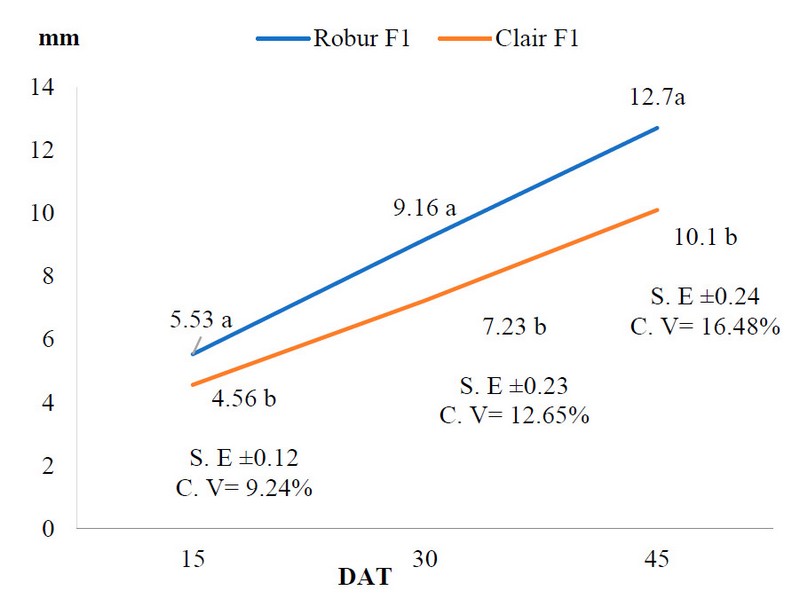
Figure 2. Stem diameter of two bell pepper hybrids during the crop cycle.
(a, b) Treatments with the same letter are not significantly different by t- Student test (p≤0.05)
(DAT)= Days After Transplant, S.E = Standard error, C.V = Coefficient of variation
The diameter in pepper genotypes is measured in the middle part of the first bifurcation immediately after the first harvest. Stem diameter have been successfully used to estimate genetic diversity in segregating the F2 Population of Ornamental Pepper. Some studies of ornamental pepper indicated recessive alleles are responsible for the increase in stem diameter15.
The stem diameter of pepper is one of the morphological characteristics commonly evaluated to improve response to drought16, effects of mycorrhizal fungi inoculation on yield17, selecting Bacillus species with growth-promoting properties18 and improving mineral uptake19.
The length of the internode
The highest internode length was recorded in the Robur F1 hybrid with 9.84 cm, while Clair F1 only reached 7.68 cm (Figure 3).
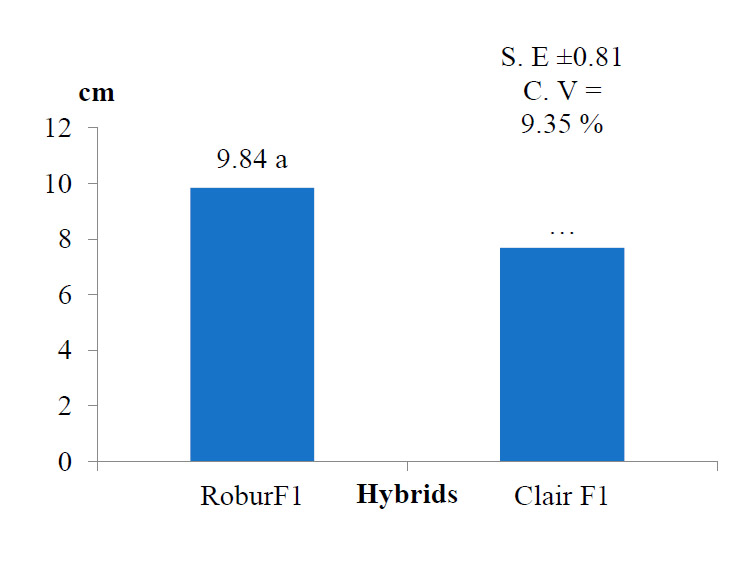
Figure 3. Length of internodes 45 days after transplant.
(a, b) Treatments with the same letter are not significantly different by t-Student test (p≤0.05)
SE = Standard error, CV = Coefficient of variation
Pepper shoots can be varied into long shoots or short shoots based on the distance between buds. Gibberelins biosynthesis in close related to the length of internode in plants20. Otherwise regulation of Cytokinins pathway signaling reduced internode lengths21. The size of internode and aerial root may increase with the application of NPK fertilizer on the early growth of Black Pepper22.
Number of days to flowering
Statistically significant differences were found between both hybrids. Clair F1 reached 50% of the bloom at 22 days after the transplant, while Robur F1 at 20 days (Figure 4).
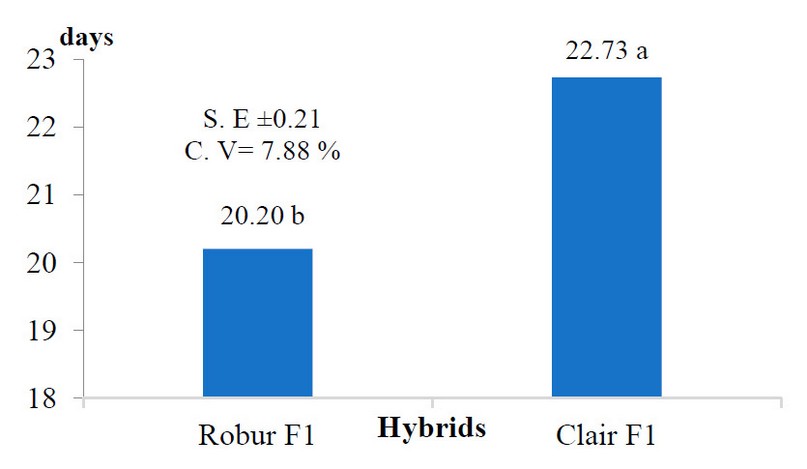
Figure 4. Number of days to flowering in pepper hybrids.
(a, b) Treatments with the same letter are not significantly different by t-Student test (p≤0.05)
SE = Standard error, CV = Coefficient of variation
The number of days to flowering was counted from transplanting until 50 % of plants have at least one open flower. Similarly, Usman23 indicated the usefulness of the variable days to flowering because it showed a negative correlation with yield in chili peppers at the genetic level. In our study, correlative analysis was done.
Number of fruits per plant, the average weight of the fruit and agricultural yield
Clair F1 had more fruit per plant than the Robur F1 hybrid because Clair F1 produced more flowers per plant and less flower abortion. The higher average fruit weight was recorded on the Clair F1 hybrid (273.60 g), and found statistically significant differences (p< 0.05) concerning the Robur F1 hybrid (212.06 g). Higher agricultural yield was obtained in Clair F1 (6.87 kg/m2) with statistically significant differences with respect to Robur F1 (5.36 kg/m2) (Table 1).
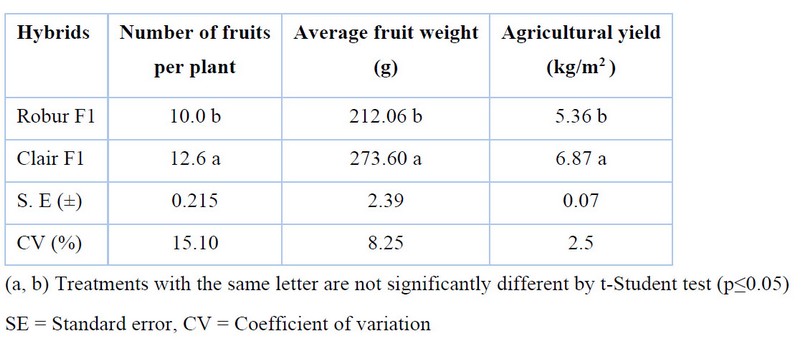
Table 1. Average fruit weight, number of fruits per plant and fruit yield in bell pepper hybrids
Regarding the variable number of fruit per plant, Depestre24 in the evaluation of 32 F1 Cuban hybrids of pepper in protected cultivation in the optimal period, obtained higher values than those obtained in this research, which ranged between 13.0 and 33.1.
Regarding these variables, in the scientific literature consulted no reports were found on the hybrids evaluated; however, Estrada25 affirmed that the size of the fruit and its firmness are essential characteristics for commercialization. Moreno26 evaluated 13 pepper hybrids under protected cultivation and reported values for the average fruit weight of 140.7 g, lower than those obtained in this investigation.
Evaluating the number of fruits per pepper plant is a genetically useful trait for selecting the most productive hybrids under natural and protected production systems27. Similarly, prediction of pepper yield potential includes determining the number of fruits per plant and some researchers considered it the most significant variable with a positive effect on the yield of pepper fruit yield28.
According to the pepper descriptor (IPGRI, AVRDC and CATIE, 1995), 10 average fruit yield weight should be determined in at least 30 plants, but in our study, 60 fruits were recorded at random. Similarly, Gebru29 found differences in average weight of the fruit of green pepper under clay pot and furrow irrigation methods.
The yields of the Clair F1 and Robur F1 hybrids obtained in this investigation were lower than those reported by Pashold and Zengerle30 in Germany, which obtained yields of 20 kg/m2, determining the right moment for irrigation using tensiometers. Villamil31 reported yields in the order of 17 kg/m2 with a method based on solar radiation. This author stressed that you can obtain yields between 18 and 22 kg/m2 in high-tech greenhouse, while yields of up to 12 kg/m2 in low-tech greenhouse and meshes.
Casanova32 highlighted that performing correct cultural tasks (pruning and vertical handling) can achieve yields of 10 and 11 kg/m2 with a planting density of 2.3-2.5 plant/m2. Some author preferred evaluation of agricultural yield and their components to determine which pepper hybrids are adaptable to local climatic conditions33. Organic growers of pepper preferred hybrids with higher agricultural yield because it results in better prices34. Mamedov35 maximized the economic efficiency of sweet peppers’ domestic hybrids in the steppe zone conditions by selecting the most promising agricultural yield varieties.
Pericarp thickness, length of the fruit and fruit top width
Greater pericarp thicknesses were observed in Clair F1 (6.5 mm) with statistically significant differences (p < 0.05) respect to Robur F1 hybrid (4.6 mm). Robur F1 hybrid had larger fruits (13.0 cm) respect Clair F1 (9.4 cm) with statistically significant differences (p < 0.05) and pepper fruits Clair F1 were significantly wider (8.3 cm) respect Robur F1 hybrid (7.5 cm) (Table 2).
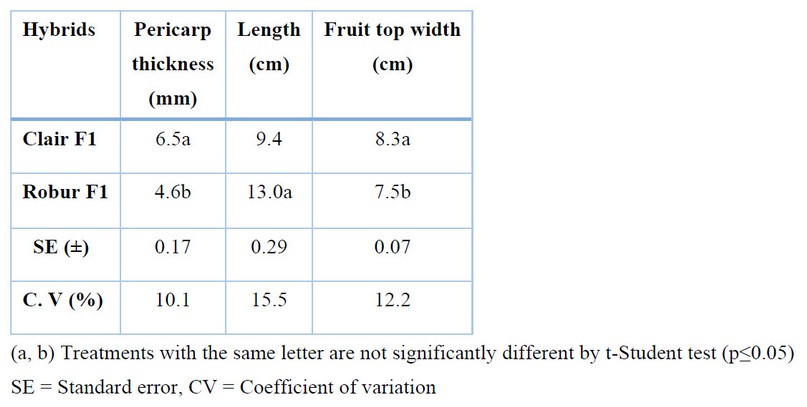
Table 2. Fruit dimensions in two bell pepper hybrids
The results of this work related to pericarp thickness differ from those reported by Hernández36 in Mexico, who obtained values of 8.54 mm for the Mecate F1 pepper hybrid under technified greenhouse conditions. This author indicated this variable’s importance in selecting pepper cultivars with fleshy pericarp for consumption as a vegetable.
Similarly, Sharma37 found fruit yield per plant had a positive and significant association with pericarp thickness, similar to this result. In organic pepper plots, a greater mean of pericarp thickness (5.05 mm) means more quality. It is one of the important parameters in the processing of Capia pepper because thicker fruits had higher mean values for total soluble solids 38. Some authors considered that a pepper cultivar with thicker pericarps may have heavier fruits and better post-harvest conservation39. Pericarp thickness is desirable, giving fruit firmness and better quality for fresh market40.
Concerning the length of the fruit, our results were superior to those recorded by Moreno41, who evaluated 13 pepper hybrids under protected cultivation, obtaining a general average of 6.8 cm. Similarly Depestre25 indicated that the longest fruits are not the heaviest or widest fruits, and our results are similar. The length of fruit may varied according with the level of urea by foliar applications42, plant densities43 and efficiency of irrigation system44. In Cuba, traditional preferences of the consumer are focused on larger pepper fruits.
The results of fruit top width were wider than those obtained by Moreno27, who evaluated 13 hybrids of peppers under protected cultivation for which they reported a general average of 8.1 cm. According to Capsicum spp descriptor, fruit width must be measured at the widest point, and 10 ripe fruits of the second harvest should be evaluated10. In our work, 20 fruits of each hybrid were chosen randomly in the second harvest. Similar to our results, Gangadhara and Badiger45 indicated that fruit width in bell peppers was positively related to fruit quality traits like fruit length, weight, and number of fruits per plant. They proposed that the fruit width trait is predominantly governed by non-additive variance. Kaur46 observed significant and desirable heterosis in fruit width over better parent and standard checks of pepper lines, arguing this variable’s importance for pepper fruit quality selection.
Color of the fruit
Robur F1 and Clair F1 showed red at ripening but were green just before the ripening stage (Figure 5).
The type and content of chlorophyll, carotenoids, and flavonoids47 determine the color of pepper fruit. Capsicum species are rich in different fruit colors, changing during each developmental stage. At the immature period, fruits may be white, green, purple or black. When completed, fruits gradually change to yellow, orange, red and brown48. The difference in the color of pepper fruit is mainly due to the differential accumulation of flavonoids and carotenoids49. In our study, not any determination of these metabolites was determined.
Shape of the fruit
Clair F1 adopted the Blocking shape, while and Robur F1 had Lamuyo shape (Figure 5).
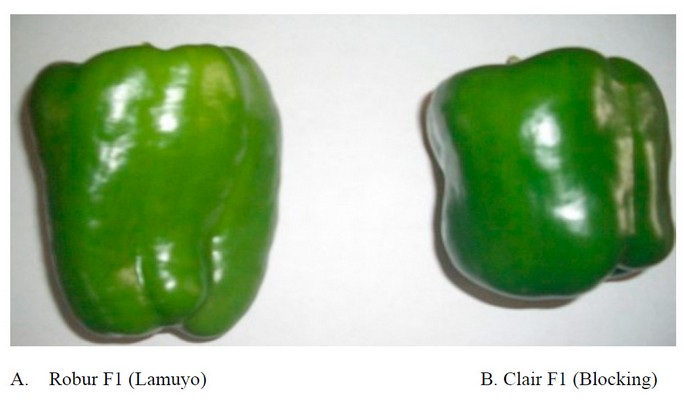
Figure 5. Fruit shape in pepper hybrids.
The evaluation of the shape of fruit in peper is very important for selecting a genotype with a resistance level to Phytophthora capsici50. In Cuba, consumers prefer typical large bell peppers used as salad. The shape and pericarp thickness of pepper fruits are the principal traits to be evaluated for cultivar selection.
Number of lobes per fruit
Clair F1 presents three lobes per fruit, while Robur F1 has four (Figures 6 and 7).
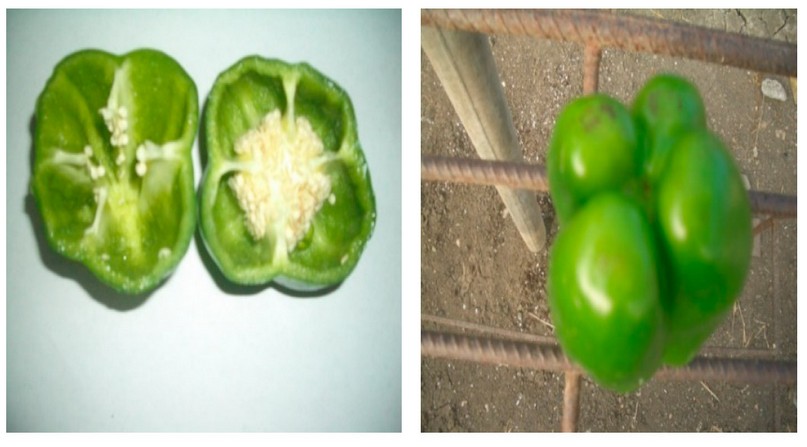
Figure 6. Number of lobes in Clair F1 fruits
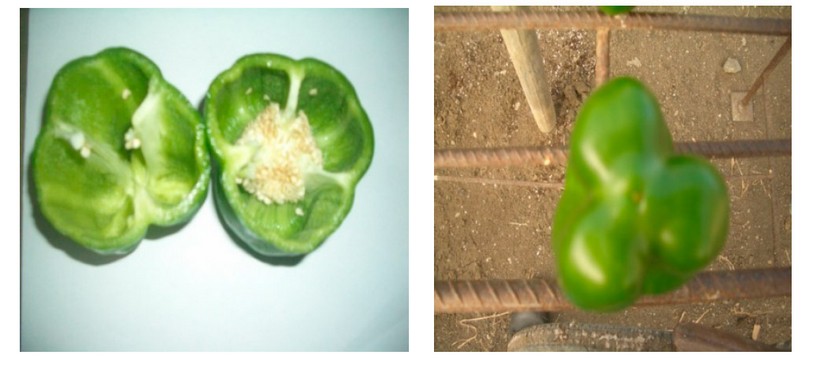
Figure 7. Number of lobes in Robur F1 fruits
These results agree with those obtained by Silva51, who mentioned the number of lobes in pepper may oscillate between 3 and 4. Several lobes are considered to have a positive indirect effect on yield via gaining fruit weight.
Results obtained in our research provide essential information on the agro-productive response of pepper hybrids of recent introduction in Cuba under the intensive production system of protected crops. Both hybrid openings may improve production systems under tropical sheltered production systems, increasing agricultural yields.
CONCLUSIONS
Height and diameter of the main stem, length of internodes and days to flowering in ‘Robur F1’ were more significant compared to the ‘Clair F1’ hybrid. The highest fruit yields were recorded in ‘Clair F1’. ‘Clair F1’ had greater pericarp thickness, while ‘Robur F1 fruit were longest. In both hybrids, green color prevailed, with Blocking and Lamuyo shapes and three to four lobes per fruit. Both hybrids may be utilized under the Cuban tropical sheltered production system.
Author Contributions: Conceptualization, Alexander Bernal Cabrera and Michel Leiva Mora; Methodology, Alexander Bernal Cabrera, Michel Leiva Mora and Yosbel Lazo; software, Michel Leiva Mora, validation, Justo A. Rojas Rojas, Hugo Alejandro Castro Alban, Sandra Soria Re; formal analysis, Alexander Bernal Cabrera, Sandra Soria Re and Michel Leiva Mora; investigation, Alexander Bernal Cabrera, Hugo Alejandro Castro Alban; resources, Alexander Bernal Cabrera; René Nazareno Ortíz, Hugo Alejandro Castro Alban and Michel Leiva Mora, data curation, Jorge Antonio Freile Almeida and Michel Leiva Mora; writing-original draft preparation, Alexander Bernal Cabrera, Michel Leiva Mora and Yosbel Lazo Roger; writing-review and editing, Justo A. Rojas Rojas, Jorge Antonio Freile Almeida and René Nazareno Ortíz; supervision, Alexander Bernal Cabrera; All authors have read and agreed to the published version of the manuscript.
Acknowledgments: The authors thank Juan Rolando Mesa Rodríguez for greenhouses and technical support.
Conflicts of interest: The authors declare no conflict of interest.
REFERENCES
1. Castellón Petrovich HF. The development of agro-plasticulture in Latin America: 20 years of activities of the CIDAPA. In: XXI International Congress on Plastics in Agriculture: Agriculture, Plastics and Environment 1252. 2018;137-150.
2. Stobdan T. Plasticulture in Cold Arid Horticulture. DRDO Science Spectrum, February. 2015;155-159.
3. Anklam E. Safe Food and Healthy Diets. In: Emerging and Traditional Technologies for Safe, Healthy and Quality Food. Springer, Cham. 2016;3-8. https://doi.org/10.1007/978-3-319-24040-4_1
4. Kantar MB, Anderson JE, Lucht SA, Mercer K, Bernau V, Case KA, et al. Vitamin variation in Capsicum spp. provides opportunities to improve the nutritional value of human diets. PLoS One. 2016;11(8):e0161464. https://doi.org/10.1371/journal.pone.0161464
5. Food and Agriculture Organization of the United Nations, Statistics Division (FAOSTAT). Crops 2020. Available from: http://faostat.fao.org/site/339/default.aspx. Accessed on July 19, 2023.
6. Olatunji TL, Afolayan AJ. The suitability of chili pepper (Capsicum annuum L.) for alleviating human micronutrient dietary deficiencies: A review. Food Sci Nutr. 2018;6(8):2239-2251.
7. Rodríguez Y, Depestre T, Gómez O. Obtención de líneas de pimiento (Capsicum annuum L.) progenitoras de híbridos F1, resistentes a enfermedades virales, a partir del estudio de cuatro subpoblaciones. Ciencia e Investigación Agraria. 2007;34:237-242.
8. Rodríguez Y, Depestre TL, Palloix A. Comportamiento en campo abierto de nuevos híbridos F1 y variedades de pimiento (Capsicum annuum L.) multirresistentes a virus. Cultivos Tropicales. 2014;35:51-59.
9. MINAGRI. Manual para la producción protegida de hortalizas. IIHLD, La Habana. 2003;113 pp.
10. IPGRI, AVRDC and CATIE. Descriptors for Capsicum (Capsicum spp.). International Plant Genetic Resources Institute, Rome, Italy; the Asian Vegetable Research and Development Center, Taipei, Taiwan, and the Centro Agronómico Tropical de Investigación y Enseñanza, Turrialba, Costa Rica. 1995. ISBN 92-9043-216-0.
11. Cornelissen JHC, Lavorel S, Garnier E, Diaz S, Buchmann N, Gurvich DE, et al. A handbook of protocols for standardised and easy measurement of plant functional traits worldwide. Australian Journal of Botany. 2003;51(4):335-380.
12. Nabeshima S, Yasutake D, Kitano M. Hybrid Vigor Induced by Cross-breeding Enhances Canopy Photosynthesis and Fruit Yield of Japanese Sweet Pepper. Environmental Control in Biology. 2019;57(2):29-38.
13. Roy S, Karak C, Hazra P. Manifestation of heterosis for earliness, fruit yield, yield attributing characters. in sweet pepper. Journal of Pharmacognosy and Phytochemistry. 2018;7(6):1300-1305.
14. Herison C, Surmaini E, Rustikawati R, Yulian Y. Morphological Characterization of 10 Hot Pepper Genotypes in Low Altitude Location. Akta Agrosia. 2018;21(2):47-54.
15. dos Santos Pessoa AM, do Rêgo ER, dos Santos CAP, de Mesquita JCP, do Rêgo MM. Genetic inheritance of traits relating to seedling and size in ornamental pepper. Genetics and Molecular Research. 2019;18(1).
16. Yildirim E, Ekinci M, Kul R, Turan M, Gür A. Mitigation of Drought Stress Effects on Pepper Seedlings by Exogenous Methylamine Application. International Letters of Natural Sciences. 2019;76:111-113.
17. Al-Karaki GN. Effects of Mycorrhizal Fungi Inoculation on Green Pepper Yield and Mineral Uptake under Irrigation with Saline Water. Adv. Plants Agric. Res. 2017;6(5):00231.
18. Pena-Yam LP, Ruíz-Sánchez E, Barboza-Corona JE, Reyes-Ramírez A. Isolation of mexican Bacillus species and their effects in promoting growth of chili pepper (Capsicum annuum L. cv Jalapeño). Indian Journal of Microbiology. 2016;56(3):375-378.
19. de Lima WB, Cavalcante AR, Bonifácio BF, da Silva AAR, de Oliveira LD, de Souza RFA, Chaves LHG. Growth and Development of Bell Peppers Submitted to Fertilization with Biochar and Nitrogen. Agricultural Sciences. 2019;10(06):753.
20. Zhou X, Zhang ZL, Yusuke J, Qiu K, Park J, Nam EA, Tyler L. ERF11 Promotes Internode Elongation by Activating Gibberellin Biosynthesis and Signaling Pathways in Arabidopsis. Plant Physiology. 2016;pp-00154. https://doi.org/10.1104/pp.16.00154.
21. Mok MC. Cytokinins and plant development. Cytokinins: Chemistry, Activity and Function. 2019;155-166.
22. Changthom C, Chaikul S, Sukhumpinij P. Effect of Pole Types and NPK Fertilizer Rates on the Early Growth of Black Pepper (Piper nigrum L.). International Journal of Agricultural Technology. 2017;13(7.2):1547-1557.
23. Usman MG, Rafii MY, Martini MY, Oladosu Y, Kashiani P. Genotypic character relationship and phenotypic path coefficient analysis in chili pepper genotypes grown under tropical condition. Journal of the Science of Food and Agriculture. 2017;97(4):1164-1171.
24. Depestre T. Construcción de multi-resistencia a enfermedades virales y adaptación al trópico en genotipos de pimiento (Capsicum annuum L.) y su aplicación. www.cuba.cu/ciencia/acc/agrarias 2002_resumen.htm. (Consultado el 3 de mayo de 2021).
25. Estrada J, Rodríguez A, Companioni N, Peña E, Cañet F, Fresneda J, et al. Manual Técnico para Organopónicos, Huertos Intensivos y Organoponía Semiprotegida. 7ta edición. La Habana, Cuba: Instituto de Investigaciones Fundamentales en Agricultura Tropical. 2007;184p.
26. Moreno EC, Mora R, Sánchez F, García V. Fenología y rendimiento de híbridos de pimiento morrón (Capsicum annuum L.) cultivados en hidroponía. Revista Chapingo Serie Horticultura. 2011;17:5-18.
27. Thakur G, Singh AK, Maurya PK, Patel P, Kumar U. Effect of plant spacing on growth, flowering, fruiting and yield of Capsicum (Capsicum annuum L) hybrid buffalo under natural ventilated polyhouse. Journal of Pharmacognosy and Phytochemistry. 2018;SP178-81.
28. Gholipoor M, Nadali F. Fruit yield prediction of pepper using artificial neural network. Scientia Horticulturae. 2019;250:249-253.
29. Orobiyi A, Loko LY, Sanoussi F, Agré AP, Korie N, Gbaguidi A, Dansi A. Agro-morphological characterization of chili pepper landraces (Capsicum annuum L.) cultivated in Northern Benin. Genetic Resources and Crop Evolution. 2018;65(2):555-569.
30. Paschold P-J, Zengerle K-H. Sweet pepper production in a closed system in mound culture with special consideration to irrigation scheduling. Acta Hortic. 2000;458:329-334.
31. Villamil JN. Evaluación de tres híbridos de chile pimiento morrón (Capsicum annuum L.) en cultivo hidropónico en invernadero. Tesis presentada como requisito parcial para obtener el título de Ingeniero agrónomo en irrigación. Universidad Autónoma Agraria Antonio Narro. Unidad Laguna. Torreón, Coahuila. 2015;43p.
32. Casanova SA, Gómez O, Pupo FR, Hernández M, Chailloux M, Depestre T, et al. Manual para la Producción Protegida de Hortalizas. 1ra edición. La Habana, Cuba: Instituto de Investigaciones Hortícolas Liliana Dimitrova. 2007;138p.
33. Ngegba PM, Kanneh SM, Quee DD, Musa PD. Evaluation of Three Hybrids Pepper for Adaptation and Yield Attributes in Western Urban Sierra Leone. International Journal of Horticulture, Agriculture and Food Science. 2019;3(2).
34. Boyhan GE, McGregor C, O’Connell S, Biang J, Berle D. A Comparison of 13 Sweet Pepper Varieties under an Organic Farming System. HortTechnology. 2019;1:1-9.
35. Mamedov MI, Gavrish SF, Pyshnaya ON. Economic efficiency of growing domestic hybrids of sweet peppers in the steppe zone conditions. IOP Conference Series: Earth and Environmental Science. 2019;395(1):012082.
36. Hernández-Fuentes AD, Montiel RC, Pinedo-Espinoza JM. Comportamiento poscosecha de pimiento morrón (Capsicum annum L.) Var. California por efecto de la fertilización química y aplicación de lombrimums. Revista Iberoamericana de Tecnología Postcosecha. 2010;11(1):82-91.
37. Sharma A, Kumar M, Kumar N, Dogra RK, Kumari S. Studies on interrelationships among yield and yield contributing traits in bell pepper (Capsicum annuum L. var. grossum). Journal of Pharmacognosy and Phytochemistry. 2019;8(2):646-649.
38. Duman İ, Aksoy U, Altındişli A, Elmacı ÖL. A long-term trial to determine variations in the yield and quality of a processing type pepper (Capsicum annuum L. cv. Yalova yağlık-28) in organic and conventional farming systems. Organic Agriculture. 2018;8(1):69-77.
39. Andrade Júnior VC, Pedrosa CE, Miranda TG, Valadares NR, Pereira SL, Azevedo AM. Biometric evaluation of morpho-agronomic traits in pepper lines and hybrids. Horticultura Brasileira. 2018;36(3):357-361.
40. Khalil MR, Hatem MK. Study on combining ability and heterosis of yield and its components in pepper (Capsicum annum L.). Alexandria Journal of Agricultural Research. 2014;59(1):61-71.
41. Moreno EC, Mora R, Sánchez F, García V. Fenología y rendimiento de híbridos de pimiento morrón (Capsicum annuum L.) cultivados en hidroponía. Revista Chapingo Serie Horticultura. 2011;17:5-18.
42. Gulab G, Abdiani SA, Kakar K, Aryan S. Effects of urea foliar application on growth and yield of green pepper. International Journal of Innovative Research and Scientific Studies. 2019;2(2).
43. Poşta G, Balint M, Dobrei A, Dobrei AG, Poşta DS, Danci M. Research Regarding the Interaction Genotype x Technological Factors in Morphological Features of Chilli Pepper Cultivated in Solaria at the Experimental Station of Timisoara, Romania. Agriculture and Agricultural Science Procedia. 2016;10:178-184.
44. Koksal ES, Tasan M, Artik C, Gowda P. Evaluation of financial efficiency of drip-irrigation of red pepper based on evapotranspiration calculated using an iterative soil water-budget approach. Scientia Horticulturae. 2017;226:398-405.
45. Gangadhara RP, Mahesh B. Dominance estimates for yield and fruit traits in bell pepper (Capsicum annuum L.). Trends in Biosciences. 2017;10(19):3428-3431.
46. Kaur D, Jindal SK, Dhaliwal MS, Meena OP. Improving fruit traits in chili pepper through heterosis breeding. SABRAO Journal of Breeding & Genetics. 2017;49(1).
47. Lightbourn GJ, Griesbach RJ, Novotny JA, Clevidence BA, Rao DD, Stommel JR. Effects of anthocyanin and carotenoid combinations on foliage and immature fruit color of Capsicum annuum L. Journal of heredity. 2008;99(2):105-111.
48. Wahyuni Y, Ballester AR, Sudarmonowati E, Bino RJ, Bovy AG. Metabolite biodiversity in pepper (Capsicum) fruits of thirty-two diverse accessions: variation in health-related compounds and implications for breeding. Phytochemistry. 2011;72(11-12):1358-1370.
49. Liu Y, Lv J, Liu Z, Wang J, Yang B, Chen W, Zou X. Integrative analysis of metabolome and transcriptome reveals the mechanism of color formation in pepper fruit (Capsicum annuum L.). Food Chemistry. 2020;306:125629.
50. Naegele R, Hill T, Ashrafi H, Reyes Chin-Wo S, Van Deynze A, Hausbeck MK. QTL mapping of fruit rot resistance to the plant pathogen Phytophthora capsici Leonian in a recombinant inbred line Capsicum annuum L. population. Phytopathology. 2013. https://doi.org/10.1094/PHYTO-05-13-0143-R.
51. Silva C, Alay A, Negrón N. Características de ocho híbridos experimentales de pimiento (Capsicum annuum L.), en el valle de Azapa. IDESIA. 2013;31:107-111.
52. Thakur S, Negi R, Mehta DK. Correlation and Path Coefficient Studies in Bell pepper (Capsicum annuum L. var. grossum) under Mid Hill Conditions of Solan District of Himachal Pradesh, India. Int. J. Curr. Microbiol. App. Sci. 2019;8(1):1788-1796.
Received: 20 June 2023/ Accepted: 25 August 2023 / Published:15 September 2023
Citation: Bernal Cabrera A,, Leiva Mora M, Freile Almeida J A, Soria R S L, Castro Alban H A, Nazareno Ortiz R, Lazo Roger Y and Rojas Rojas J A. Agro-productive response of pepper hybrids in a tropical sheltered production system. Revis Bionatura 2023;8 (3) 47. http://dx.doi.org/10.21931/RB/2023.08.03.47



















